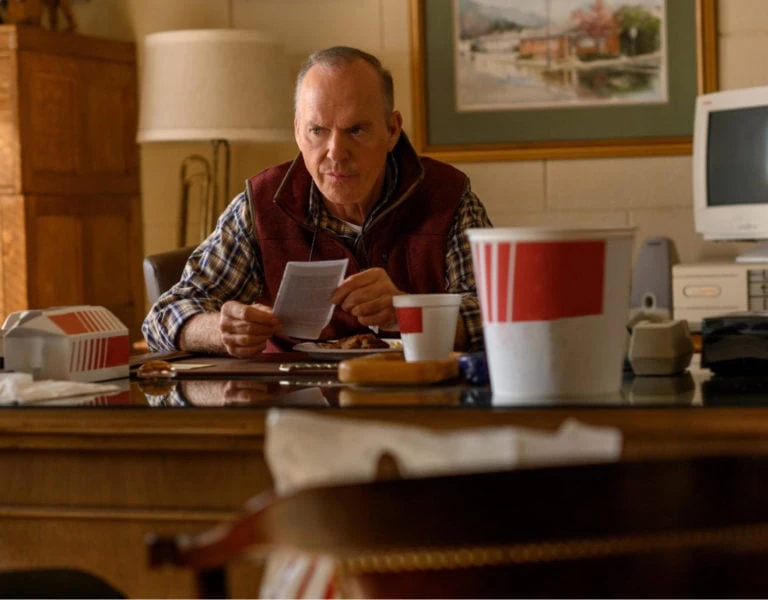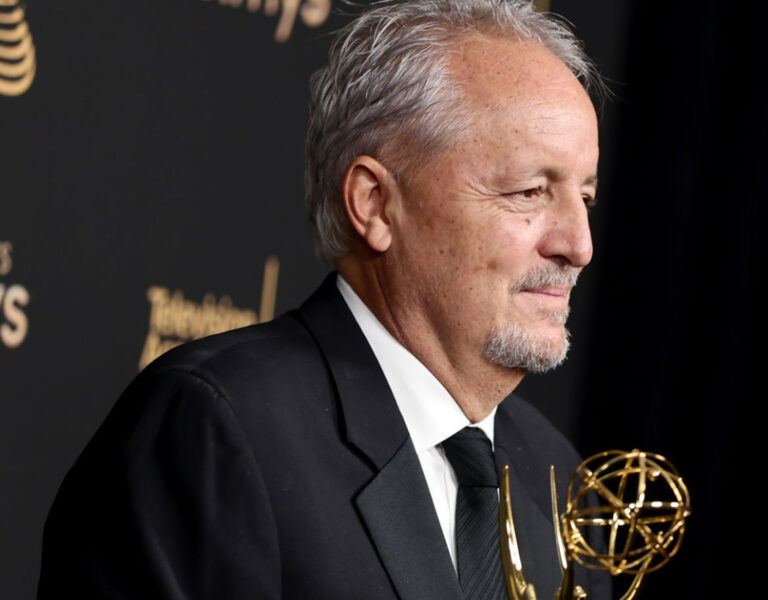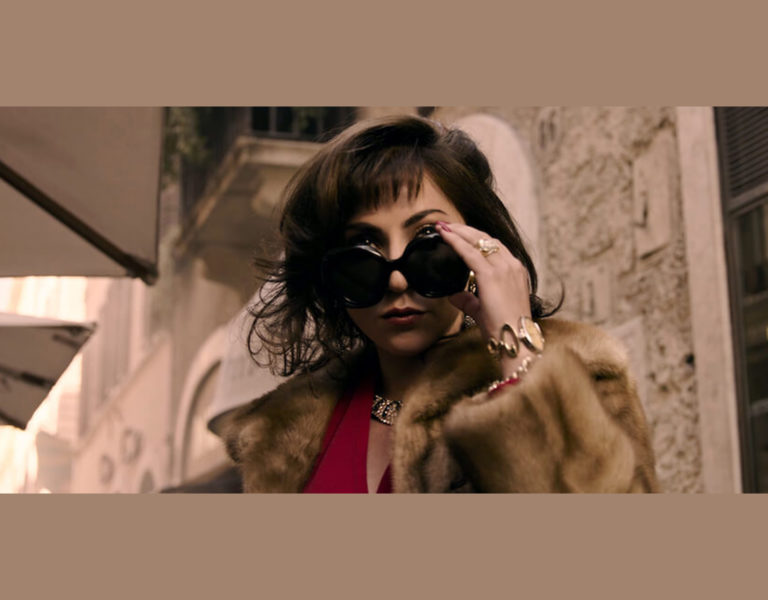SMOKE & MIRRORS
Checco Varese ASC reveals how he visualised 1970s Los Angeles for Daisy Jones & The Six.
“There is this myth in American culture that if you live on the East Coast and you travel to the West Coast, everything is going to be better and everything is going to be brighter,” says cinematographer Checco Varese ASC.
In the case of Prime Video’s Daisy Jones & the Six, this myth plays out to perfection, particularly in the cinematography.
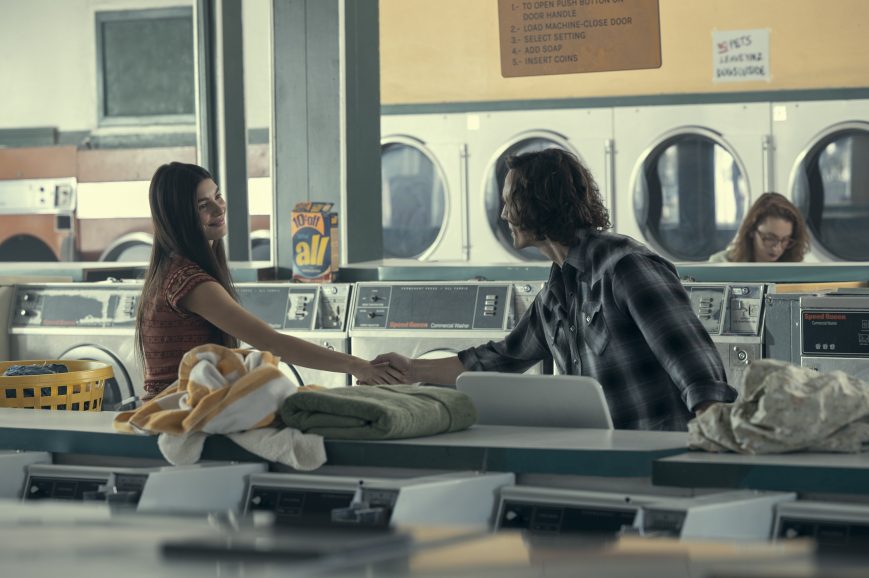
“I hope that in my projects I can follow the arc of the story,” says Varese, addressing the literal translation of the east-to-west myth. “The characters have an arc, the story has an arc, so the cinematography [must] have an arc.”
The 10-episode miniseries, created by Scott Neustadter and Michael H. Weber based on Taylor Jenkins Reid’s book of the same name, is the story of a 1970s band who went from playing weddings in Pittsburgh, Pennsylvania to arenas in the biggest cities in the States, only to call it quits at the height of their fame. Varese – known for his extensive work in TV like Dopesick and Them, and films like It Chapter Two and The 33 – shot the first block of episodes with director James Ponsoldt (and one with Will Graham), and Jeff Cutter took on the second half with directors Nzingha Stewart.
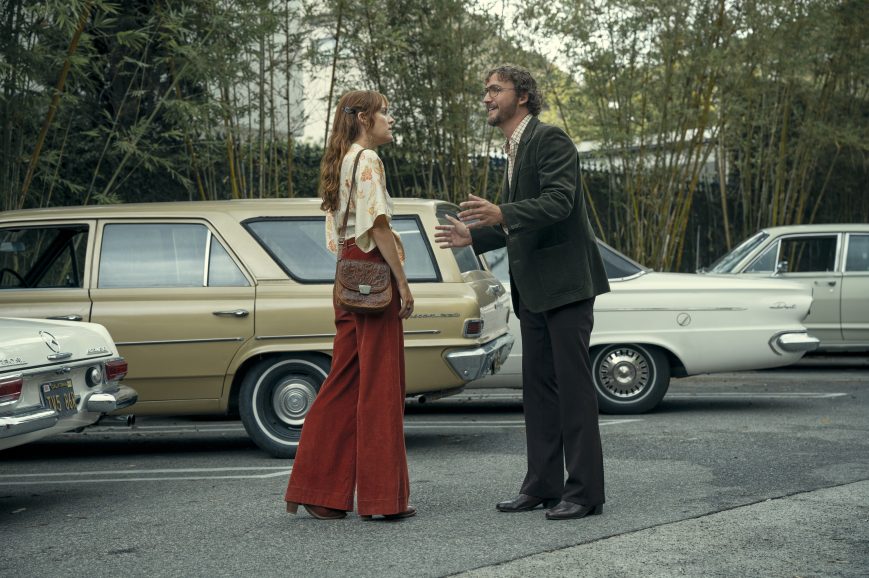
“The Pittsburgh part was designed to be northern light and a little oppressive,” Varese says, explaining the cinematographic arc. “When [the band] arrives in Los Angeles, they’re inside the van and there is a shaft of sunlight that hits the lens and gives us a huge flare. I guess it was luck.”
Varese’s first impression of the script was that it would be challenging, which is of course what attracted him. He has a background in shooting 1990s music videos, which was shared with Cutter, though both DPs differ in their strengths beyond that. And while Varese believes all period projects are complex, he feels recent period, like the 1970s, is especially tricky to shoot. In fact, the show jumps from 1997, where there’s a mocumentary style talking-heads documentation going on, back to 1961, 1968, 1970, 1975, and 1978. Much of that time takes place in Los Angeles, but Pittsburgh, New York City, and a Greek isle come into play as well.
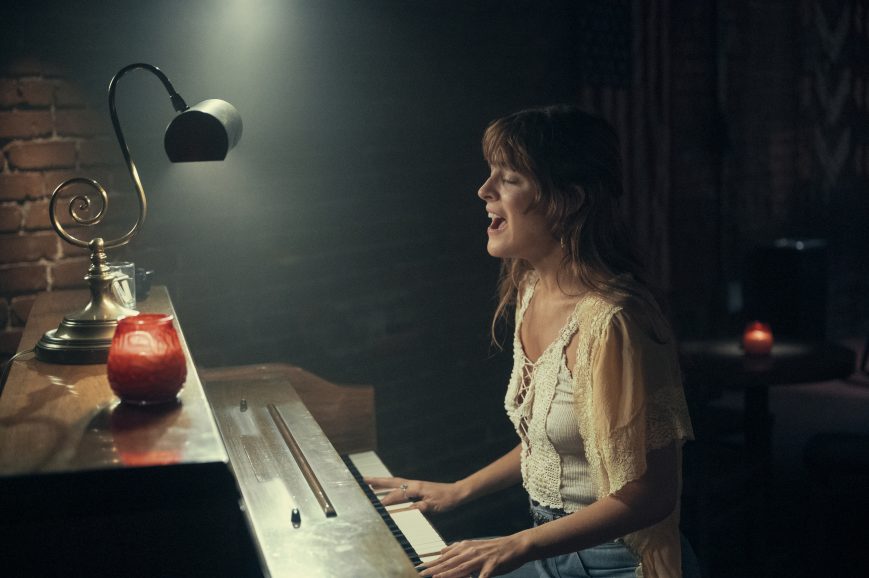
“You might think Los Angeles looks like the ‘70s but actually, nothing there looks like the ‘70s,” says Varese, who credits production designer Jessica Kender with artfully recreating that period of LA. “Maybe one or two buildings, but the traffic lights don’t, and the sidewalks don’t, and everything has a 21st-century patina as opposed to a 20th-century patina.”
It was Varese’s goal then to cinematographically recreate this recent past while not jarring the viewer too much as they jump around 30 years’ worth of time. This meant using the same camera across the show’s decades and letting the lenses do the heavy lifting of shifting the era. Though, when lead singer Billy’s (Sam Claflin) wife, Camila (Camila Morrone), the band’s unofficial videographer and photographer, captures her own footage, Varese often let Morrone loose with an old refurbished Super 8. But other than those fleeting moments peppered throughout the episodes, he wanted the timeless, edgy look of the ‘70s without shooting in Super 16.

“I’m agnostic about cameras,” says Varese, admitting that it was a natural decision to go with the Sony Venice, which is what production wanted. “But with glass, you have dozens of lens manufacturers and all of them are fantastic. To me, the glass in front of the camera is what for a writer are the commas and exclamation points, the periods. If you write a bunch of words but don’t put in periods or commas, it doesn’t make any sense. To me, the lens is the grammar.”
Varese ended up choosing Angénieux Optimo Primes, which had just come out when the Daisy Jones team were in prep. He liked them for their flare and how they flavoured that era, and he and his first assistant, Mark Strasburg, used old-fashioned tricks to give a little softness for earlier years and then for late ‘70s NYC and Greece, changing the camera language to make it more vibrant, a bit more disco.
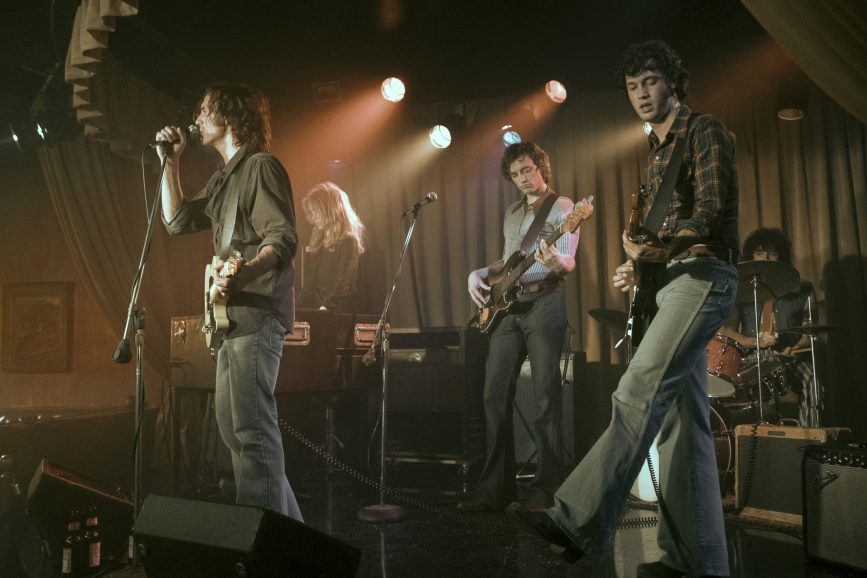
“We used Tiffen Glimmerglass 1/8 internal and Fogal 80 (hosiery) in the back element of the lens – Keslow 3D printed a holder – for the earlier periods of the ‘60s and ‘70s.”
“There is this element of an atmosphere where the sky is not totally blue because of pollution where everybody smokes marijuana or cigarettes, there are no fire alarms; you fry an egg, and everything just smokes up. So, I gravitated to that feeling.

“Close your eyes and imagine a movie about Mark Zuckerberg and Facebook,” he continues. “It’s clean, it’s a mouse, it’s typing, click, click, click, it’s the blue light of the computer reflected in somebody’s face; it’s not warm, it’s not truthful. Now, imagine a movie about musicians in the ‘70s: everybody’s house was full of ashtrays all over the place. My parents didn’t smoke, but as a kid I remember the stench of nicotine in our house after a party. Everything had this brown, warm feeling to it. And I don’t say brown negatively—it was this patina of warmth in the Los Angeles sand, in the buildings.”
In concert with the show’s nicotine patina, as Varese calls it, much of its look comes from the camera movement, too. Varese worked with operators Joseph Arena and Josh Turner to keep a youthful feel when holding the camera and directed them to always keep the camera curious. There is a character who remains unknown until the very last episode—the person behind the 1997 documentary being made about the band. Outside of those interviews, Varese wanted to have the camera always searching for something, moving constantly.
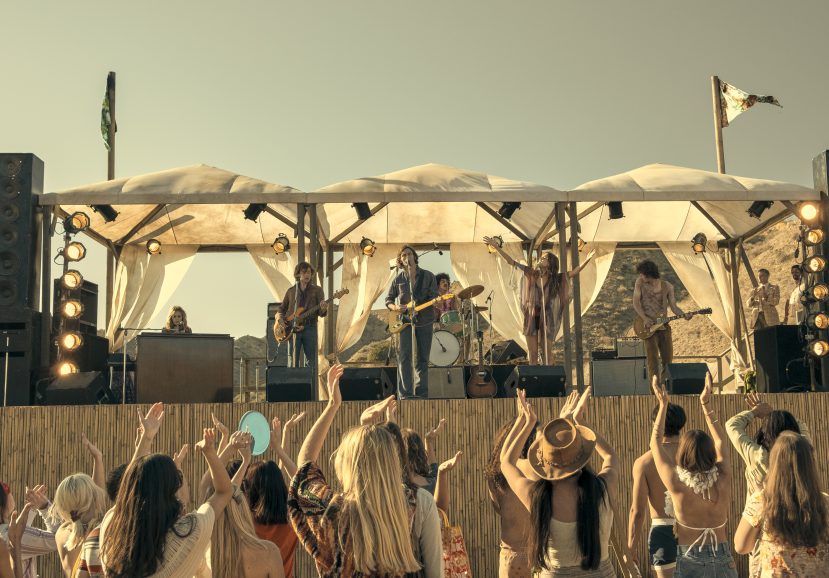
“This is young people having sex, destroying their life, creating music, looking for friendship, discovering the beauty of the sky and the palm trees, or the depth of an overdose and too much drinking,” says Varese. “The camera was always in search of answers. That is what the show’s premise was – what are these people looking for?”
The script and structure of the world in Daisy Jones gave Varese a blueprint for that feeling of an intimate portrait of six characters trying to find love, whether that be the love of a father, or the love of a mother, or another band member, or the audience they were performing to.
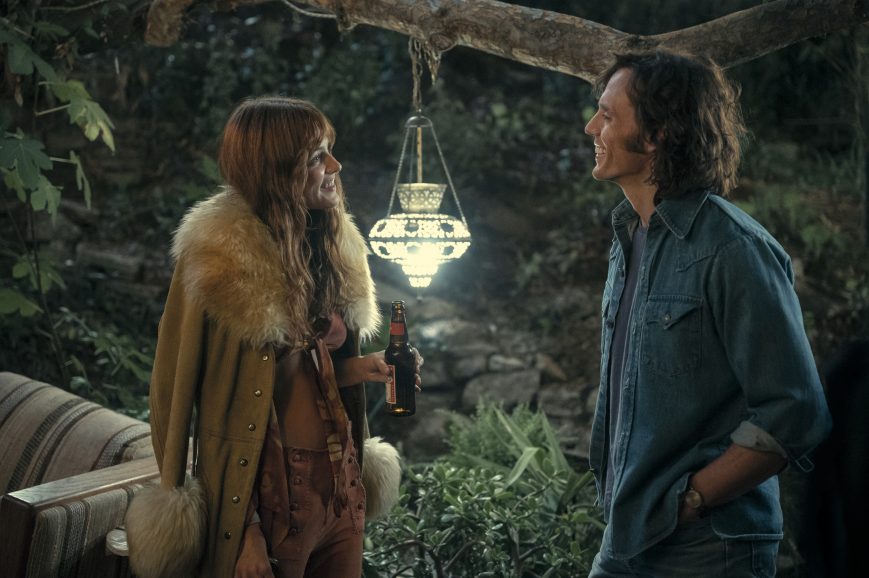
“It’s about loneliness,” says Varese. “It’s not about drugs and rock ‘n’ roll. I mean, it is about drugs and rock ‘n’ roll, but it’s about what do they find as human beings in that world. The very complex life of a band member gets reduced to, ‘Can I love you?’
Varese and Ponsoldt decided that this was going to be played out in the looks between characters. And this wasn’t just for story’s sake, it was for practicality and COVID safety as well. Sticking to close-ups and coverage of the band, their looks between each other and out to the audience, allowed for a cheat, if you will, of concerts with thousands of people. If it was a big arena or theatre show, they digitally added audience; for the smaller venues, they’d keep it to about 50 extras. And of the half-dozen concert scenes in the show, there was hardly much visual acknowledgement of the crowds.
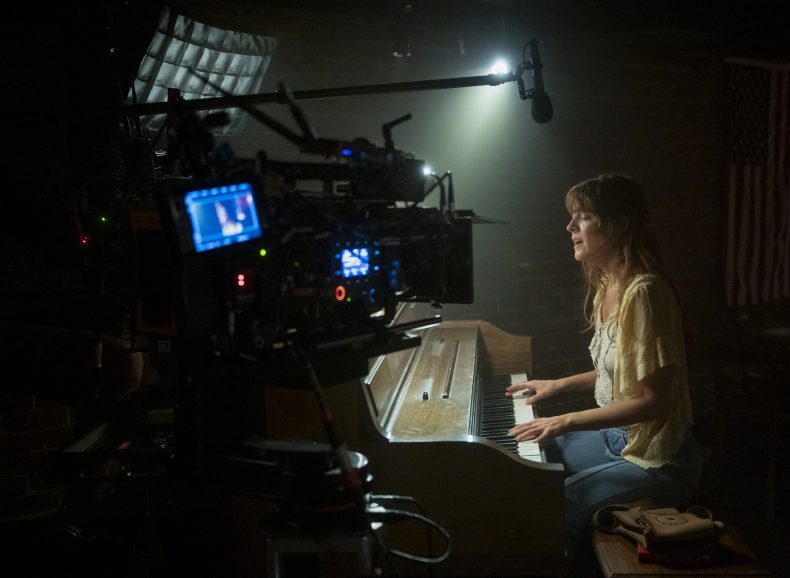
“This became a story through the script, and then through the reality of how we had to shoot it, it became a story of these characters’ loneliness and sadness,” says Varese.
One scene in the series that seemed like the antithesis to the loneliness takes place in Sam and Camila’s rented house in Laurel Canyon during a party at night. They have dozens of guests, including their bandmates, surrounding a piano singing, and their new baby is even there.
“It’s the scene that I remember with fear and agony and love and happiness,” Varese half-jokes. “It’s when they officially become a band with Daisy (Riley Keough) and they’re all together in this beautiful little house in the middle of the Hollywood Hills. Then the lights go out. That scene was extraordinarily challenging technically.”

It was a small house in the hills and because of the tight roads and close neighbours, they were only able to put one LED panel outside. They also had a little bit of moonlight coming through the windows and a few practicals inside the house. Once the blackout happens, the party hosts pass out candles.
“We’re there asking actors to please bring the candle closer to their face so we could light them, but we didn’t want them burning themselves either. It was a technical nightmare, but it was also an extraordinary moment to dig into my documentary work from my early days of shooting news in all sorts of locations around the world.
“It’s a crucial moment in the series,” Varese continues. “It’s a moment when they look at each other and they start singing and playing instruments as a band. It’s also a crucial moment in my acid reflux [laughs]; I really liked that scene.”


